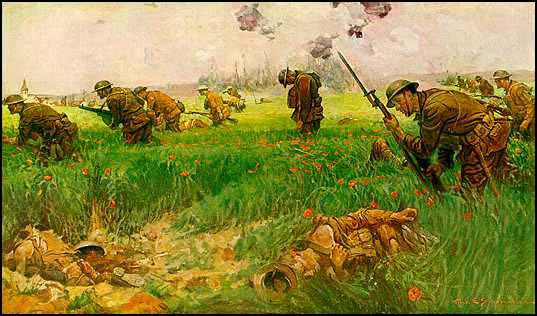Infantry Tactics
At the beginning of the 20th century most military commanders placed a great deal of emphasis on using the infantry for massed bayonet charges supported by the cavalry and mobile field artillery. Leaders of the French Army were particularly keen on this approach and favoured sending its infantry into action without equipment for entrenchment. Their commanders argued that defensive precautions were unnecessary as repeated waves of massed assault, delivered with sufficient speed and aggression, could not fail.
Infantry tactics had to be reassessed after armies suffered heavy casualties during attacks against machine-guns. The French infantry were forced to retreat during the invasion of Lorraine and the Germans experienced heavy losses when storming the fortress at Liege during August 1914.
Despite the support of Preliminary Bombardment, Chlorine Gas and Flame-Throwers, the infantry failed to achieve a breakthrough on the Western Front during 1915. The following year, new tactics such as Creeping Barrage and tank attacks, also failed to breakdown entrenched defences. The same was also true of the infiltration tactics tried by the Germans in 1917.
It was only at Amiens in 1918, when Colonel John Fuller managed to persuade General Henry Rawlinson to use 412 tanks followed by soldiers and supported by over 1,000 combat aircraft that the Allies managed to breakthrough the German frontline on the Western Front.

